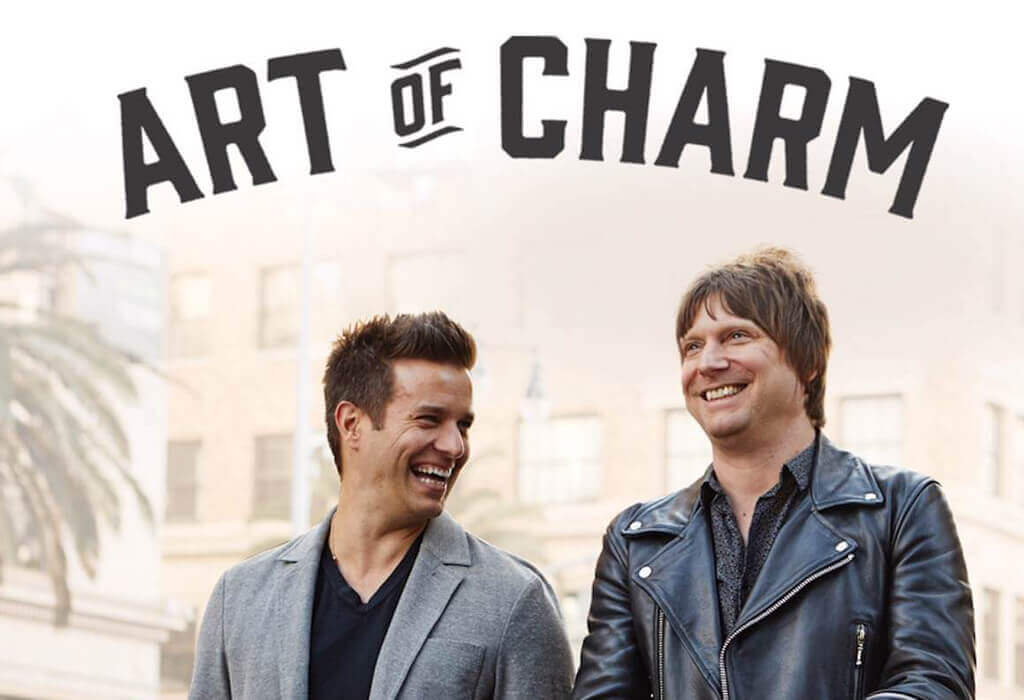Envy. Procrastination. Fear. These three emotional patterns are responsible for some of our worst tendencies, from apathy to terror, pining to repression. This brutal trifecta can mess with our flow, sap our energy, and keep us stuck in place, often for years at a time. What’s worse, these feelings seem unavoidable, since they’re such an integral part of our daily experience.
But it doesn’t have to be that way. These feelings can just as easily become the key to making us extraordinary, if we know how to process, understand and capitalize on them. If Robert Greene’s motto that everything is “material” to work with—even the ugly, unpleasant, often shameful habits we tend to develop—then envy, procrastination and fear are actually our greatest teachers in disguise.
That’s what this piece is about: what our “ugly” emotions can offer us, and how to use them to our advantage.
Envy as Fuel
Of all our ugly emotions, envy is probably the most prominent and the least pleasant. Amplified by the success theaters of Facebook and Instagram, our envy only grows as we increasingly compare ourselves to friends, family, and strangers. But if you can harness it properly, envy can serve as a high-octane motivational fuel.
But first, we need to differentiate between two forms of envy identified by researchers: malignant and benign. Malignant envy is a frustrating kind of desire, usually perceived to be unfair or unjust, which often makes us feel angry or resentful. It aims to damage the position of the person you envy, effectively pulling them down (if only in your mind) so that both of you are more comparable. This brand of envy is more hostile, and is designed to restore a sense of self at the expense of its object. As the late author Gore Vidal once said, “Every time a friend succeeds, I die a little.” Classic malignant envy.
Then there’s benign envy, which has an element of admiration and optimism, though it might still bring up feelings of lack and frustration. But instead of pulling someone down, benign envy compels you to move yourself up. The same researchers found that respondents with benign envy showed greater motivation to study for exams, and actually produced better results on a test.
One feeling, two forms: a damaging, hostile brand of envy; and an aspirational, motivating sort. The difference between being consumed by envy and being driven by envy is the ability to convert malicious envy into its benign form.
Is this possible? Definitely.
The first step is to recognize the distinction between destructive and positive envy. The second is to take an inventory of the feelings that come with each: the hostility and paralysis of malicious envy, the inspiration and momentum of benign envy. Which feels better? Which would you prefer to live with? The third is to accept that while envy is inevitable, what we do with that envy is largely up to us.
Of course, we feel envious of different characteristics, some of which we can develop, some we can’t. Differentiating between the two will help you identify which goals are worthy of your benign envy. For example, you might find that you envy people who are tall or naturally athletic. Not surprisingly, this envy will almost always be malicious, because these aren’t capabilities you can choose to develop.
But other abilities are worthy of your envy. Good writing, for instance. Microsoft Excel chops. Sales skills. Yoga game. Strong social dynamics. There will always be an element of natural talent involved in skill, of course, but the role of talent is generally eclipsed by hard work, as multiple studies, have found. If a skill is attainable through hard work, then it’s worth being envious of—and therefore worth converting into benign envy, so you can attain it too.
(This also connects to growth vs. fixed mindsets, which we talk a little bit about here, and why Khan Academy founder Salman Khan will never tell his son that he’s smart.)
But to really capitalize on envy, you will eventually have to take action. This is the essential step. The moment we begin investing in ourselves, seeking out learning opportunities, putting in practice time, setting goals, viewing the objects of our envy as models rather than competitors, raw envy begins to transform into motivational fuel. Once we decide to make a change, the things that easily cause us shame and discomfort become the very things driving our improvement.
That’s the key: identifying objects that deserve your envy, converting that envy into fuel, and using that fuel to take action. Without action, however, no amount of envy—even benign—can produce results.
Envy can also serve as an extremely useful guide. Author Alain de Botton, for example, believes in learning from the people you’re envious of. When he meets someone who makes him feel envious, he runs a simple thought exercise:
Why do I feel envious of them? Is it how they look? Is it the job they’re doing? What aspect of their job? What is it that I could use? [our emphasis]
Using this simple framework can help you create a highly personal guide for your own life.
Examining the motivation of your envy—why do you want this particular thing?—can reveal your true interests. Do you want to be an excellent sales manager, or do you want the money it brings? Do you want to be a successful writer, or do you crave the recognition? Whether these motivations are pure or derivative, productive or misguided, they will help you decide whether something is worth pursuing—and why.
Studying the objects of our envy can also help us identify the actions, mindsets and habits that lead to success. When de Botton asks what it is that I could use, he’s actually converting malignant envy into benign envy, and forcing himself to study the objects of his envy. In this way, the people we envy can become useful models for our own behavior. That’s what envy can do when we use it well: turn competitors into templates, and fantasies into actions.
Interestingly, this mindset will push you to grow closer to your sources of envy, not (as many would prefer) further away. While most people try to repress their envy, or (as author Neil Strauss points out) mask it with dislike, disdain and disinterest, the only way to truly capitalize on envy is to move closer to its origin. The object of envy might be a person (an entrepreneur, athlete or thinker you admire), a community (the group of people excelling in your field, an online forum or league), a physical location (a conference, theater or club), an object (a book, blog or app), or a skill (coding, storytelling or writing). If we’re going to allow our envy to teach us, then we need move closer to the people and things causing it.
Whatever the source of your envy, this will always be true: The closer you grow to your envy, the more it can ultimately teach you. That means embracing the feelings of envy along with its objects. Ultimately, it’s unlikely you’ll remain envious forever. As you grow, your envy will inevitably subside, and it will subside because you’ve embraced it.
Productive Procrastination
Procrastination is one of those paralyzing, all-consuming tendencies that derails projects, demoralizes teams and compromises careers. That awful feeling of inertia has visited people at every level in every field, and never disappears completely. We can hack away at procrastination with productivity techniques, but when it comes to the deeper feelings of apathy and resistance, we need a more profound solution.
Fortunately, procrastination can also be used to our advantage.
And just like envy, researchers have found that procrastinators come in two types. Passive procrastinators tend to be more avoidant, paralyzed by doubt and indecision, while active procrastinators tend to put off their commitments in order to work with the adrenaline that results from an approaching deadline. Both can be highly effective.
Passive procrastination, for example, can create an opportunity to make progress on other less urgent, but still important, tasks. Stanford professor John Perry famously embraces passive procrastination and exploits it to his advantage. By avoiding important tasks, Perry says, passive procrastinators can easily keep themselves busy by doing less important tasks that are still worthwhile, and that will contribute to their momentum in taking on more important work.
Active procrastination comes with its own challenges, including elevated stress, a need for external pressure and possible self-sabotage, but the urgency it creates can be a powerful fuel. Here too procrastination can become an advantage, with the help of artificial deadlines. For example, I often set a deadline for myself three days ahead of an actual deadline, so that I know I’ll be done in time—and even if I cut it close, I’m not actually at risk of missing a commitment. In this way, I get the best of both worlds: I get the adrenaline and the time. (If you need to have some skin in the game to take an artificial deadline seriously, check out Stickk.com or tell a friend to keep you accountable.)
But procrastination can help us in other ways, too. Even when you’ve completed a project on time, waiting until the deadline to submit it can give other people the impression that you gave your project more thought and effort. On the level of perception, this can be powerful (especially in corporate environments, where optics, for better or worse, do matter).
Frank Partnoy, author of Wait: The Art and Science of Delay, points out that procrastination can also be powerful in personal relationships. In cases where we’ve done something wrong, he says, waiting makes for better apologies:
If we wait, the other person can process information about exactly what we did: the who, the why, the how, the details of what happened. If we apologize too quickly they don’t have time to figure all that out and our apology doesn’t mean as much.
Delaying an apology—or any uncomfortable conversation, for that matter—is its own form of procrastination. But a swift apology can be even more damaging than a late one. Similarly, submitting a project far ahead of a deadline might give the impression that you rushed, or tried to get the project out of the way quickly. Procrastination can give the opposite impression, by forcing you to work down to the wire.
Of course, delaying a project might rob you of the time to actually invest in a project—but purely on the level of perception, it could just as easily make you look good.
Examining the root causes of procrastination is essential. Most procrastinators assume that they merely have poor habits (and many do), but there is usually something more meaningful happening beneath the surface.
So ask yourself: What exactly are you avoiding by procrastinating? The discomfort of struggling with a project? Your own limitations? Your feelings about the subject matter? If so, then your procrastination might in fact be a way to avoid deeper feelings (of failure, shortcoming, or ignorance) that would be exposed by doing the work. If this is the case, then you’ll discover that you’re not really avoiding the work—you’re avoiding yourself. This will direct you to the areas of yourself that need development, and possibly inspire you to reengage with your work, since work is one of the best ways to strengthen those aspects of yourself.
On the other hand, it’s possible that you’re procrastinating in order to avoid your own boredom, impatience, or belief that what you are doing isn’t important or interesting enough. If so, then your procrastination can teach you a great deal about what you find meaningful. Author Nicholas Nassim Taleb, for example, relied on procrastination to cut the sections from his book, Antifragile, that he didn’t feel enthusiastic about. His procrastination on those sections was actually a sign that they weren’t worth pursuing. If they were, he realized, he would have been dying to write them.
That’s how procrastination can actually become a powerful guide for your priorities, desires and goals. Sometimes, we avoid things precisely because our deeper self knows that they aren’t worth pursuing. In those cases, procrastination functions as the opposite of envy: while envy signals that you should pursue its object, procrastination might signal that you should avoid it.
That’s how these two “ugly” emotions (envy and procrastination) can ultimately serve you, not just individually but in tandem—by creating a kind of emotional geartrain that, by meshing in the right proportions, generates some serious motivational torque.
Fear, That Great Teacher
Your breathing shallows. Your heart rate speeds up. You want to run away—anywhere—but you’re too busy trying to keep your knees from buckling. Fear, Frank Herbert writes in Dune, is the mind-killer.
But it can also be a mind-builder. Like envy and procrastination, fear can reveal our deepest desires and priorities, if we can learn to reframe it as a guide to what’s truly important. As the old adage goes, “Follow your fear.” Which is precisely what author Tim Ferriss suggested in one of his interviews:
If [I’m] ever in doubt about the most important to-do item on list is, typically it’s what makes me most uncomfortable. Like drumming with Foreigner … I’ve never been comfortable with music. And surfing … I’ve never been comfortable with water and have had a fear of drowning. And, of course, parkour, because I have a fear of heights and falling and a bad ankle.
All of which became major achievements for Ferriss as he embraced his fear.
As we did with envy, we must ask what we are fearful of. Almost always, we are fearful of things we need or want—otherwise, why would we feel anything at all?—which tend to be new, foreign, and largely unknown. Unfamiliar objects of desire: that is the greatest source of fear. As playwright David Mamet wrote, “Every fear hides a wish.”
To understand what those wishes are worth to us, we have to consider the sacrifices we make by suppressing them. Ask yourself what it’s costing you—financially, emotionally, physically, and in missed opportunities—to continue living the way you’re living right now. What is the fear of stepping into a new career costing you today? What will it cost you in ten years? If you’re afraid of meeting new people, how does the prospect of not going on a date for another year sit with you?
These are uncomfortable questions to ask, and we can only understand them through the prism of our fear. The more the consequences make you cringe, the more your fear has to teach you about what you find important. You begin to fear the effects of your fear. When your fear of the status quo becomes greater than your fear of change, change becomes possible.
The next step, of course, is to take action in spite of the fear. And a great place to start is to chip away at your fear in private. As author and marketer Seth Godin once said, in an excellent meditation on fear:
What we need to do is say, “What’s the smallest, tiniest thing that I can master and what’s the scariest thing I can do in front of the smallest number of people that can teach me how to dance with the fear?” Once we get good at that, we just realize that it’s not fatal. And it’s not intellectually realize—we’ve lived something that wasn’t fatal. And that idea is what’s so key—because then you can do it a little bit more.
Notice that the strategy here isn’t to eliminate fear and then to act (a common belief, and one that keeps us stuck in fear). The only way out is through. To capture our fear in small doses, to try it on, to survive it—that’s the practical formula for reducing our fear.
So if you’re afraid of water, take a walk on the beach, then stand in the shallows, then slowly wade in. If you’re afraid of public speaking, talk to a friend, then talk to a group of friends, then invite several over to your house for a low-stakes presentation. If you’re terrified of approaching a stranger, talk to your barista, then to a fellow patron, then to a person standing outside your cafe. You’re on no one’s timeline but your own. The goal is incremental progress.
Through gradual exposure, your sensation of fear will eventually dissipate. On a cognitive-behavioral level, this is a proven method to reduce and learn from your fear at the same time.
(By the way, that’s another fascinating thing that this ugly emotion can teach us: We are generally not afraid of the sources of our fear, but by the sensation of fear itself. Hence Franklin Roosevelt’s famous saying: “The only thing we have to fear is fear itself,” which he called the “nameless, unreasoning, unjustified terror which paralyzes needed efforts to convert retreat into advance”—in other words, the irrational stuff that stops us from getting better.)
So examine the sources of your fear, discover the desires that motivate it, and embrace your most compelling interests. Consider what your life has become, and will remain, if you shy away from your fears. Recognize that fear ultimately only fears itself, and begin to play with your fear in small, contained, safe conditions, until you slowly desensitize yourself to the terror and paralysis, and eventually learn to operate with it. With time, and much more quickly than you probably anticipate, you’ll become the person you’ve wanted to be.
Ugly is Powerful
It’s tempting to avoid our feelings of envy, our tendency to procrastinate, and our sensation of fear. These are, after all, some of the most difficult and shameful emotions we possess. But once we learn how to use them, they become a gift. The key is to confront them, and make them a deeper part of who we are.
Because when we repress our envy, procrastination, and fear, they fester, confuse, and paralyze. But when we examine them, they teach, illuminate, and instruct. When we engage them, they soften, retreat and make room. And when we embrace them, they become tools for greatness, and pave the way for our growth.
Image 1 credit: SeRGioSVoX
Image 2 credit: Kristof Magyar





